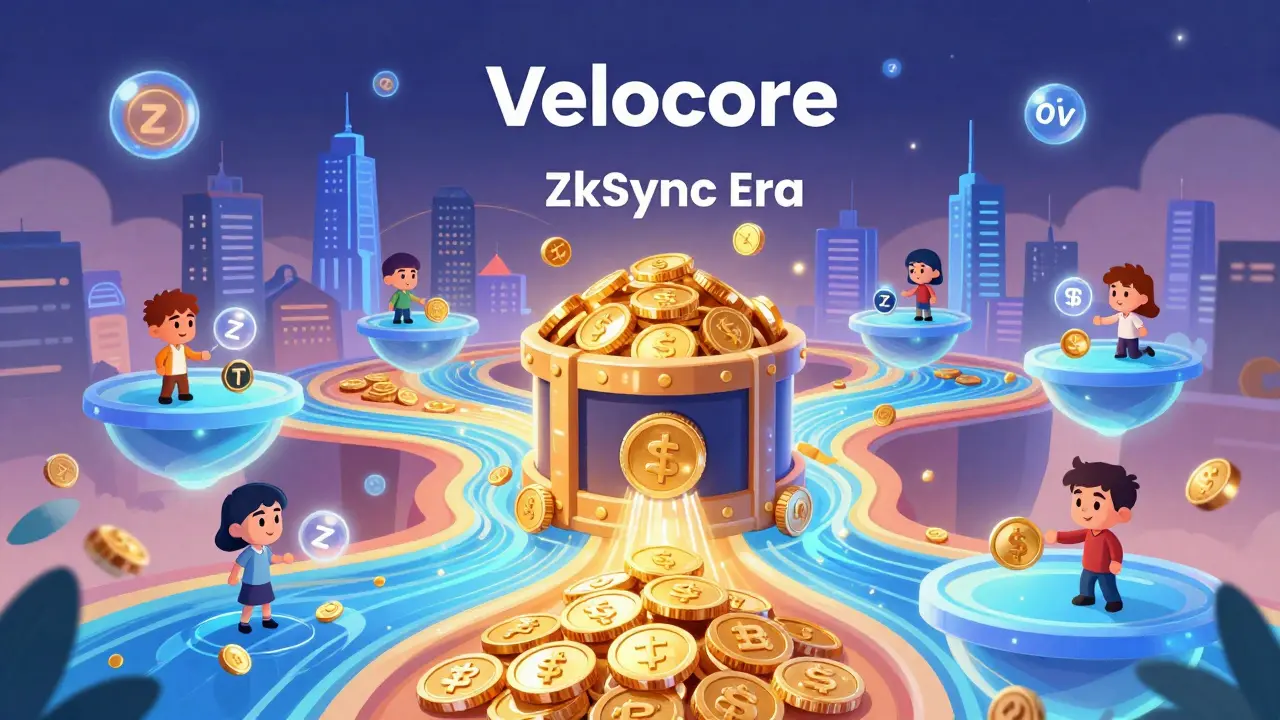Decentralized Exchange (DEX): Your Guide to Peer‑to‑Peer Crypto Trading
When you start looking at decentralized exchange, a peer‑to‑peer platform that lets users trade crypto assets directly from their wallets without a middle‑man. Also known as DEX, it puts control in the hands of traders instead of a company. In contrast, a centralized exchange, a traditional platform that holds user funds and matches orders on a server keeps custody of assets and runs its own order book. Understanding this split is the first step to picking the right place for your trades.
Key Concepts Around Decentralized Exchanges
At the heart of any DEX is a liquidity pool, a smart‑contract‑driven reserve of tokens that powers automated market making. Instead of waiting for a buyer or seller, the pool always offers a price based on the ratio of assets inside it. This mechanism removes the need for a central order book but relies on smart contract, self‑executing code that enforces trade rules on a blockchain to manage swaps, fees, and slippage. The quality of a DEX often comes down to how deep those pools are and how well the contracts have been audited.
Because there’s no custodian, your wallet stays connected to the blockchain during a trade. That means you keep your private keys, and you’re only ever signing a transaction that tells the smart contract to move funds. This design reduces the risk of exchange hacks, but it also pushes responsibility to the user – you need to verify contract addresses and understand gas fees. In practice, a well‑built DEX bundles these checks into a clean UI, making the experience feel almost as simple as using a centralized service.
Many users wonder how DEX fees compare to those on centralized platforms. Typically, a DEX charges a % of the trade amount that goes straight to liquidity providers, plus a small network fee for the blockchain. Centralized exchanges often add a spread, withdrawal fees, and sometimes a maker‑taker model. By looking at recent reviews – for example the IDEX hybrid DEX analysis or the SharkySwap risk assessment – you can see that fee structures vary widely, and the cheapest option isn’t always the safest.
Security is another hot topic. A DEX’s safety hinges on the smart contracts it runs. Audits from firms like CertiK or Trail of Bits add confidence, but no code is immune to bugs. That’s why many platforms now offer bug‑bounty programs and formal verification. If you read the GCOX review or the Barginex red‑flag report, you’ll notice how missing audits or anonymous teams raise red flags. Always check the audit status before committing large sums.
Regulation is catching up, too. Some jurisdictions treat DEXs like any other service that facilitates trade, while others focus on the token pairs offered. For instance, the MAS crypto oversight article shows how new licensing rules can affect token listings on both centralized and decentralized venues. Keeping an eye on regulatory news helps you avoid sudden delistings or frozen assets.
Liquidity providers (LPs) also play a crucial role. By depositing assets into a pool, they earn a share of the fees and sometimes extra rewards in native tokens. However, LPs face impermanent loss when the price of pooled assets diverges. Reviews of platforms like IDEX and Liquid Crypto Exchange often weigh these risks against the potential yields, giving you a realistic picture of what to expect.
Hybrid models are emerging that blend the speed of centralized order matching with the trustlessness of DEX smart contracts. IDEX’s 2025 hybrid review notes that it routes orders off‑chain for latency but settles on‑chain for security. This approach tries to give users the best of both worlds, though it adds complexity to the architecture.
Whether you’re a beginner looking for a simple swapping tool or an advanced trader hunting low‑slippage pools, the DEX landscape offers many options. Below you’ll find detailed reviews, risk assessments, and step‑by‑step guides that walk you through everything from token wrapping to liquidity mining. Dive in to find the exchange that matches your style and risk tolerance.
Slingshot Finance Crypto Exchange Review: Zero Fees, Cross-Chain Trading, and What You Need to Know
Slingshot Finance is a zero-fee decentralized crypto exchange that lets you trade across multiple blockchains without giving up control of your funds. Learn how it works, who it's for, and whether it's safe.
Velocore Crypto Exchange Review: Is This zkSync DEX Worth Your Time?
Velocore is a zkSync Era-based DEX using Protocol Owned Liquidity and an enhanced ve(3,3) model to offer low-fee, high-efficiency trading. It's ideal for ETH/stablecoin swaps but lacks wide token support. High risk, high reward.
How to Use Multiple Crypto Exchanges to Bypass Restrictions
Learn how switching between crypto exchanges can dodge restrictions, the risks involved, and how to stay compliant while trading efficiently.
MetaTdex Crypto Exchange Review: What You Need to Know in 2025
MetaTdex is a low-profile decentralized exchange with $4.7B in volume but no audits, fees, or reviews. Find out why it's missing from top rankings and whether it's safe to use in 2025.
Why dYdX Blocks Users in Certain Countries - The Truth Behind Its Decentralized Claim
Explore why dYdX blocks users from certain countries, how close-only mode works, and what the paradox means for true decentralization.
CryptoBridge Exchange Review 2025: Decentralized Platform Assessment
A thorough 2025 review of CryptoBridge, the decentralized exchange built on BitShares, covering features, security, community sentiment, and current status.





